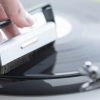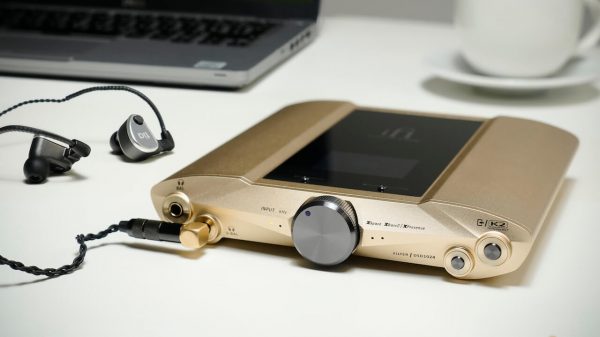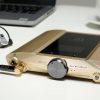Digital music streaming hit 85% market penetration in 2020. Not that it needed any help from the COVID-19 pandemic to achieve that remarkable level of adoption, but consumers have been stuck at home for almost 14 months in some parts of the world and it’s clear to all that streaming services (both music and VOD) have benefitted from this. The AudioQuest DragonFly Cobalt DAC faces a lot more completion in 2021 from a seemingly endless list of new Dongle DACs but it still makes a compelling case for its supremacy.
Access to tens of millions of songs is a very attractive proposition.
I spend almost $60/month for Tidal, Qobuz, and Spotify and am happy to do so. It’s cheaper than drugs and something that I use on my phone, in my car, and throughout our home.
Roon has proven to be super important to organize it all. I know it’s expensive, but I can’t recommend it strongly enough.
I’m definitely ambivalent when it comes to devices that support MQA. I think it’s a stretch that the vast majority of consumers truly care or have heard the benefits of high-resolution audio formats so far. We have a lot of work to do in that department.
One criticism that I’m hearing from more and more people is that we don’t own the music we pay for.
Duh.
Streaming is a rental. And if you don’t continue to pay for it each month, your entire library vanishes.
Unlike CDs and records that you own for life.
And nobody knows what you’re listening to. Just saying.
DSD doesn’t move the needle for me at all.
My brain is also starting to question the sonic advantages of 24-bit/192kHz vs 24-bit/96kHz. I’ve been listening to more and more albums that are available in the various bit/sampling rates and through DACs that can highlight the differences if they exist – I’m not sure that it sounds better most of the time.
As someone who has calibrated his fair share of HDTVs and projectors, I can see with my own eyes the differences between 1080p, 4K, 8K, HDR, Dolby Vision, and the improvements they deliver.
I find the sonic differences between the various high-resolution digital audio codecs far less obvious.
If this all sounds like I’m souring on streaming, you would be incorrect. I’m just readjusting how I use it and focusing on more affordable hardware to enjoy the 0000s of albums I’ve already saved.

Portable DAC/headphone amplifiers have gained a lot of traction in recent years with music listeners who use a smart phone as their primary source but care deeply about sound quality. I travel with an iPhone and MacBook Pro almost everywhere and listen to music when I run or work.
So what do I rely on most of the time?
When AudioQuest introduced the first-generation DragonFly DAC/headphone amplifier in 2012, it became an instant best-seller because it elevated the sound quality of USB devices like laptops at an entry-level price. It would take another two versions before the DragonFly Red and Black would turn smart phones into high-end music servers for below $200; users connect the DragonFly to their iOS, Android, or Windows-based devices via lightning-USB, or made-for-Android OTG USB-A Female to USB-C adapters.
AudioQuest has built a stable of streaming products and accessories around the DragonFly concept; designed by Gordon Rankin, one of most respected high-end audio designers of his generation and leading innovators of USB DAC technology through his own brand, Wavelength Audio.
Rankin has worked tirelessly on the DragonFly platform for almost nine years; every generation of the product has attempted to address a number of critical areas where the product could be improved sonically, but also how it interacts with smart devices and powers headphones.
Where it becomes an endgame solution is how it deals with battery draw, noise (created by the device it is connected to) and works with every platform that consumers might use.

With the DragonFly Cobalt, AudioQuest has developed a portable solution the size of a package of gum that significantly improves the sound quality of every device that it is connected to but also addresses the key areas that have limited its overall performance.
Battery life is a major selling point for any smart device, and if you use your smart phone as a streaming platform for both audio and video, it’s frustrating how quickly your phone can run out of juice. Connect something like a portable DAC/headphone amplifier through its power connection port and you end up looking for a wall outlet to recharge even faster.
The AudioQuest DragonFly Cobalt features a new ESS ES9038Q2M DAC chip and Microchip PIC32MX274 microprocessor which draw significantly less current and offer a 33% increase in processing speed over the DragonFly Red. Our test with the DragonFly Cobalt connected to both an iPhone 6S and LG V30, saw a dramatic reduction in battery use providing additional hours of playing time.
The Cobalt also addresses the issue of noise (electrical, Wi-Fi, Bluetooth) created by the host device with more robust power supply filtering. The reduction in noise should improve the resolution and transparency of the sound quality, and let you hear greater levels of detail.
AudioQuest has beefed up the included accessories with a form-fitting DragonTail female USB-A to male USB-C adapter.
The DragonFly Cobalt supports 24-bit/96kHz playback, MQA, and incorporates the ESS Sabre 9601 headphone amp, and bit-perfect volume control; the headphone amplifier can output 2.1 volts of power opening up the door to dozens of headphones.
AudioQuest has supported the DragonFly range with firmware updates and the Cobalt offers the same level of support.
But does it sound any better for an additional $100?
$299 is not an inexpensive upgrade to any smart device or laptop, but in the world of portable high-end components, the DragonFly Cobalt is remarkably affordable for what it offers.
It’s a solid piece of engineering when you can pack more performance, greater power efficiency, and wider compatibility in a smaller chassis and the Cobalt delivers on all of its promises. The industrial design is sleek and we applaud AudioQuest for including a rather pricey adapter as part of the package.
Sonically – the differences between the Red and Cobalt are not insignificant. I always found the Red to be slightly analytical sounding with some headphones and powered loudspeakers, but the Cobalt is far more relaxed and natural sounding. Vocals and instruments have a warmer, more fleshed out tone, and there is a noticeable difference in the level of background noise; something that is much more apparent through IEMs and more neutral sounding headphones.
Bass doesn’t extend that much lower through the Cobalt, but there is a definite improvement in the resolution and overall tone.
Horns have more than enough bite without sounding hard and the decay of notes is far more obvious through revealing headphones or loudspeakers. Soundstage depth and width is well above average for a portable device and the Cobalt is much easier to listen to for longer periods of time than the Red.
Music moves along with respectable pace through the AudioQuest DragonFly Cobalt and it works just as well on the desktop making it a legitimate DAC option for desktop audio systems and your home audio system.
AudioQuest is no longer alone in this category and I own 4 other dongle DACs that work very well. The iBasso DC03 would be my “budget” choice for sure.
The THX Onyx Dongle DAC is less expensive than the DragonFly Cobalt and offers very competitive sound quality.
At the end of the day, I turn to the DragonFly Cobalt because it’s consistently been the most balanced sounding and easiest to use.
For more information: www.audioquest.com/dacs/dragonfly/dragonfly-cobalt
Where to buy: $299.95 at Amazon




































Nenad Kuzmic
February 22, 2024 at 4:52 pm
Can i conect cobalt to the laptop and to the amplifier?
Ian White
February 22, 2024 at 5:19 pm
Nenad,
Cobalt using the USB goes into your laptop. Use a 3.5mm to stereo RCA cable for the amplifier.
Best,
Ian White
Brian Mitchell
February 22, 2024 at 5:25 pm
Cobalt has two connections: USB into a laptop and 3.5mm out to headphones. You could connect an amplifier via its 3.5mm output.